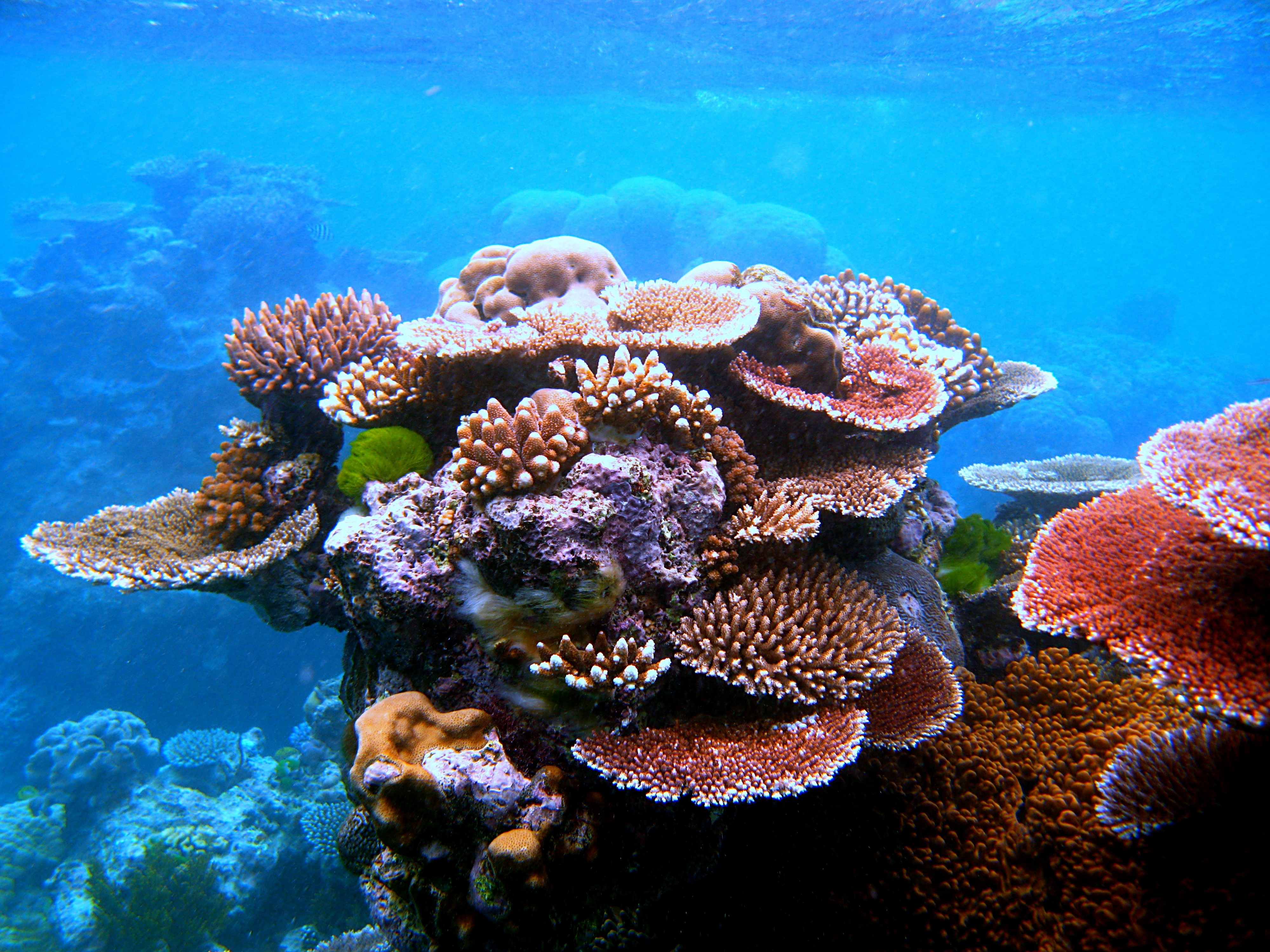Now, to get an idea of the living conditions of a coral reef, we are going to go through the abiotic and biotic factors of this ecosystem. Abiotic limiting factors include salinity of the water, temperature, depth, waves, and translucency. In coral reefs, salinity levels range from 34 to 37 parts per thousand. Temperature usually never gets below 20℃ or above 28℃, which means that almost all reefs are located in between 30°N and 30°S. Coral reefs also form where there are waves crashing because waves bring in nutrients and plankton that are vital for a reef to thrive, and these areas are usually no deeper than 45 meters. Lastly, the water must be clear enough for light to get through to wherever the reef is because it relies on phytoplankton's and algae's photosynthesis as its main source of energy. PH (around 8.4) is another factor, any changes in pH can drastically change/harm the reef environment.
Next, the biotic limiting factors of the coral reef. Biotic factors have to do with living things; for example how many sharks there are to control the populations of fish, or how much phytoplankton there is to produce enough energy for the rest of the food chain. In addition, biotic factors of a reef can be the amount of coral (coral is living), since coral forms a home for a large majority of the animals. If there is only so many coral structures, only so many fish can make a home there. Biotic limiting factors are largely predator/prey related. Either the amount of predators can control a prey population, or the amount of prey available can also control the predator population.

No comments:
Post a Comment